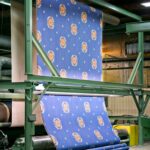Exploring the Revolutionary Vapour Absorption Technology

In today’s rapidly evolving world, the pursuit of sustainable and energy-efficient technologies is more crucial than ever. Among the innovative solutions that have emerged, Vapour Absorption Technology (VAT) stands out as a remarkable advancement. Offering an alternative to traditional cooling and heating methods, VAT presents a unique approach that harnesses the principles of thermodynamics to create a more environmentally friendly and cost-effective solution. In this blog post, we will delve into the intricacies of Vapour Absorption Technology, its underlying principles, applications, and its potential impact on our energy landscape.
Understanding Vapour Absorption Technology:
Vapour Absorption Technology is a process that utilizes the absorption of vapour by a liquid to achieve cooling or heating. Unlike conventional compression-based cooling systems that rely on mechanical compression and expansion of refrigerant gases, VAT employs a chemical absorption cycle. This cycle involves a working pair of substances: a refrigerant and an absorbent. When heat is applied, the refrigerant evaporates and is absorbed by the absorbent. The resulting mixture is then condensed to release the absorbed heat and start the cycle anew.

Principles and Advantages:
At the heart of Vapour Absorption Technology lies the second law of thermodynamics, emphasizing the transfer of heat from a higher temperature source to a lower temperature sink. VAT effectively harnesses this principle by using low-grade waste heat, such as from industrial processes, solar energy, or geothermal sources, to drive the absorption cycle. This unique feature offers several advantages:
1. Energy Efficiency: VAT can operate with lower-grade heat sources, making it an energy-efficient alternative to traditional compression-based systems.
2. Environmentally Friendly: The absence of mechanical compression reduces the need for harmful refrigerants, making VAT more environmentally friendly and contributing to a reduced carbon footprint.
3. Flexibility in Heat Sources: VAT can utilize various heat sources, including solar energy and waste heat, providing greater flexibility in applications.
4. Cost Savings: By utilizing waste heat that would otherwise be lost, VAT can significantly reduce energy costs and enhance overall efficiency.
Applications:
Vapour Absorption Technology has a wide range of applications across various industries:
1. Air Conditioning and Cooling: VAT can be used for air conditioning in commercial and industrial buildings, reducing energy consumption and contributing to sustainability goals.
2. Refrigeration: The technology finds applications in refrigeration systems, particularly in remote or off-grid areas where access to electricity is limited.
3. Heating: VAT can provide efficient heating solutions for residential, commercial, and industrial spaces.
4. Power Generation: In cogeneration systems, VAT can recover waste heat from power generation processes, enhancing overall efficiency.
5. Solar Cooling: VAT can be integrated into solar cooling systems, harnessing the sun’s energy to provide cooling without the need for electricity.
Conclusion:
Vapour Absorption Technology represents a groundbreaking leap forward in the realm of energy-efficient and environmentally sustainable technologies. By leveraging the principles of thermodynamics and chemical absorption, VAT offers a versatile and effective solution for cooling, heating, and power generation. As we continue to prioritize sustainable practices and strive to reduce our carbon footprint, the adoption of Vapour Absorption Technology holds the promise of a greener and more energy-efficient future.






